How is gender and femininity explored within Pop Art?
For the subject of my essay I have decided to look into the themes of femininity and gender and how they are expressed in Pop-art. In order to support my subject matter I will look into the work of Pauline Boty and James Rosenquist, what key meanings are explored and what I gain from their works. I also want to look into the ideas of gender and how art works can be directed to men by using the female form, how sex sells to both the male and female demographic, and how everything is ultimately at the mercy of the male gaze. I also want to look into the idea of the American Dream, and how it shapes and motivates lives, and how this echoed into the art world.

Pauline Boty: It’s A Mans World II, 1965, Style- Feminist art, Pop art, Nude painting,
This painting is a collection of pornographic images that have been painted in a collage format, it’s the main focal point in the foreground. The background is a simple landscape, using block colours and shape. This image is made up of two panels, with the landscape as the background and the nude women as the foreground. The form of the painting is very interesting, the panels have very harsh, straight lines which then conflicts with the soft, curved lines of the naked women. There are very angular squares surrounding the painted women, giving them their own borders and importance. Each image is a snapshot from a different magazine, and is an expression of the female form and femininity. Every woman is nude, with only two of the women wearing bottoms, and one woman using a thin curtain to cover herself. The fact that every woman is naked aloud’s to the idea that this image is for male pleasure. The women are all grouped together in the middle panel, depicting either to the fact that all women sit in the same box or that they are all standing together as one.
The background of the image is a simple landscape, with soft flowing trees and shrubbery, from the flat, simple sky, to the unnatural colour of the lake. The whole landscape is a simplified version because it is not the main focal point, it is just background noise. Time and motion are missing from this piece, there are no clouds in the sky to show physical movement and all the women are painted in a snapshot fashion that a moment was captured and that is how the image will stay forever. Unity and variety go hand in hand in this piece, the women are all partaking in the same soft porn poses, but there is the variety in the way that each women is different, no one has the same hair, makeup, or body. The artwork is balanced with perfect symmetry, the middle panel splits the background evenly this makes the whole piece balanced. Emphasis in this piece is solely on the naked women, they are in the main part of the piece, and they have the most variety. They are the titles muse, they are for men in a man’s world.
Some of the key meanings that I have gained form this image is that her piece is both a celebration and critique surrounding the female form, it is a celebration with the liberation of the naked body but a critique because it is for the male gaze. When you first view the image you are assaulted by the female bodies, it is only after the initial assault is over that you start to pay attention to the rest of the image. The landscape is also a celebration and critique of the female form as the rising and falling of hills and the trees echo the naked bodies. This piece is hypocritical with expression because these women are embracing their bodies but they are only embracing themselves this way for men, there is no freedom of their expression. These images have been taken out of pornographic magazines which are purely made for the male demographic. And that links seamlessly to the title which is all about a man’s world.
“Most depictions of the female in paintings throughout history have been commissioned and painted by men for the pleasure of other men thus leading to the ‘male gaze.'” This is an interesting artistic note because It’s a Man’s World II was created by a woman with the subject material being women. This is showing Pauline’s self-awareness to the world around her, she knows what sells and what men want to see, and men want to see women in their most raw state. Women have always been a main subject in art for their beauty and grace, and later for the unknown. In this piece the identity of the women is unknown because they have been taken from pornographic magazines which have then been mass produced removing any intimacy and identity? With the faces being obscured in some way this removes all personal feelings for these women that the viewer may gain, with them being from pornographic magazines they are purely objects of lust.
The American Dream is not a modern concept, “…it was first publicly defined in 1931. Historian James Truslow Adams used the phrase in his book Epic of America… The American Dream is that dream of a land which life should be better and richer and fuller for everyone, with opportunity for each according to ability or achievement.” But this is not only an American standing point, for Botys was from England where similar ideas where you could become and be anyone you wanted to be. After the devastation of World War II there was a need for people to not only make the best of a bad situation but to make it better for themselves. A Man’s world supports the western ideals, what would a man’s world look like? In Botys eyes a man’s world would be filled with naked women at his fingertips with even the landscape ready to present the female form to him.

James Rosenquist: I Love You with My Ford, 1961, oil on canvas, 6ft. ca. 10 in. x 7ft. 9 in. Moderna Musset, Stockholm.
This artwork is a collection of advertisement style images that have been arranged in an anti-advertising format, these images have been used within the rules of re-signification. The main subject matter of this piece is the bumper of the car, the sensual woman laying down, and the coloured spaghetti. Rosenquist was originally a billboard painter, focusing on advertising which supports the graphic nature of the work, its bold and eye grabbing. This work was created in 1961, “when abstract expressionism drew to a close” and the start of a graphic, pop art age, this work reflects this as there appears to be no correlation between the images at first glance, it is only when you look deeper into the meanings that it becomes clearer.
This work is a three panel oil painting which has further been quartered, they are all different images that are selling all different ideas. When I look at this image I get the idea that all these images are linked together for the male gaze, these are all images that would gain attention, from the big shiny and new car, to the colour of the food. Each element in this piece is dominant but some is more than other, this is a very thought provoking piece, there are any elements of thought and layers that can be pulled apart and analysed. Lines in this piece have been used to section and divide.
Shapes in the top panel are repeated creating harmony and balance, which conflict with the rest of the piece, the bottom panel is chaotic and disorganised. Without the use of colour in the top panels the image is left very flat and cold, the use of shadow and tone conflicts with the brightness and colour of the food. This is a very clever use of tone as the eye is drawn to the intensity against a plain foreground. The top panels look as though they have been zoomed in to remove the context, which then forcing the images into an abstract field where the viewer has to make the context for themselves.
When I first look at this image I am drawn into the sexual ideas and theories that surround this work, when looking at this image the eye is drawn to the colour at the bottom rather than scanning down the work like a book. The colour is the most interesting element until you start to pull apart the sexual themes that surround the work. I think this whole work is filled with western ideologies of gender and masculinity, the big muscle car supports the American dream. The American Dream is an idea that anyone, no matter where you come from can better oneself, and reach any goal, the main goals being own a house, car, have a wife and family, and be the best version of yourself.
After the Second World War there was a huge boost in production of commodities as metal was no longer needed for the war effort, this saw the rise in car sales as they became more widely available. The car was seen as a masculine object because it was big, study, and associated with men as at the time before the 1960s before the women’s lib, it was mostly a male workforce, this then reflected in the consumer society. This then associated the car with power, wealth, and self-improvement, thus reinforcing the American Dream. Furthermore this idea links into the second panel, a woman who obscured from the viewer and laying down.
One of the first things I noticed about this middle panel is that it is smallest and the least is focus, which bends to the idea that cars, and objects can be more important than people. One of the main things that captures my attention about the women being small and out of focus is the idea that people are background, and secondary to things that can be bought, reinforcing the capitalist ideology. It is a very sensual position, with her laying on her back with her mouth open, as though she is in the throes of passion, tapping into carnal desires. Although it is not directly sexual the position of the woman brings forth sexual innuendos to the uncultured mind. Furthermore, this links into the ideas surrounding the American Dream, because once a man has gained a car it’s only natural for him to pick up women who would later become his wife and give him children. This is supported by the artwork, because the eye flows down the piece from the car to the women, insinuating that you can’t have one without the other.
“When I copied a 1940s spaghetti illustration, I had to ask myself, why am I doing this? I didn’t honestly know. It was just an instinct about images as pure form… in a sense the spaghetti is like an abstract expressionist painting. De Kooning loved it. He said it was sexy.”
The final (and most interesting for me) panel is not only the largest of the three but the only one in colour. Rosenquist himself was unsure what attracted him to the image of spaghetti but that it was like an abstract painting, that idea that anything can be art, even brightly coloured, mass-produced food, or the bumpers of cars. Similar cases have arose in the art world before, ideas that if the artist did not make the objects expressed then is it really a work of art, but then all these theories get thrown out the window when it comes to painting. By nature painting is the be-all-end-all of classical art, artworks included but are not limited to the Mona Lisa by Leonardo da Vinci. There is also the museum critique that just because something is on a canvas and hung up in a gallery does even the most obscure objects become works of high classical art. This links into the spaghetti because Rosenquist just liked the look of it, the form, and expression, but when placed with the other images he has created a dream chasing, erotic image. The whole use of colour also makes the spaghetti all the more real, but also engages the ideas about sound and texture. When looking at the spaghetti it’s easy to images the wet sound of the food moving around on a plate, and the slimy wetness of a cold food that should be served hot.
The whole piece is titled I Love You With My Ford, not only making the Ford a main focal point in the image but also a cold, material, manmade object to base human feelings and emotions off. This is also linking into the idea of masculinity and gender when expressing emotions, it’s though that you are unable to love without this material object. That without this object to fulfil the American Dream there is no base line for emotion, all emotions lead up to objects that can be compared to people. I Love You With My Ford is also a critique of this capitalist driven society that places the means for objects above people, in this work the woman is the smallest part, unfocused and distant, and the need to collect and own becomes the sole, shining purpose of the American working class man’s life.
Throughout this essay I have been exploring the ideas of gender, how sex is sold to the population, and how the American Dream seeps into every corner of art. Boty and Rosenquist both use all three of these elements to gain the viewers’ attention, drag out all analytical ideas and themes that can be both personal and public. When looking at the Boty image I was first drawn into the complex ideas of the female from and how it is perceived by a male demographic, but as I started to look deeper into the image there were more subtle theories. For Its A Man’s World II, there was the idea that there are masculine expectations about the world they live in, and that women are a secondary factor. This idea is also supported by Rosenquist in I Love You With My Ford, the women in the image is smaller, not in focus, and just reduced to a carnal ideal. Woman have always been used in artworks and painting, their soft lines, and hidden mysteries, but in Botys work they are complete bare, and any mystery is lost. The woman are on display like a piece of meat, the images are hung together and placed in a patchwork of carnal fantasy and desire.
The American Dream became a main focal point of analysis when looking at Rosenquists work because of the factors that surround the time in which it was created, the 1950’s and 1960’s saw a huge boost in capitalist and commodity consumption. After the war there was a lot to be desired that the American people went without, the car has always been seen as a wealthy man’s prize, so it was only natural that people wanting to better themselves and their lives would see the car as the ultimate status symbol. The title of the piece may be about the Ford but it’s not close to being the main focal point, the colour and texture of the spaghetti violently takes the viewers eyes and reluctantly lets go.




























 Sol LeWitt, From the word ‘art’: blue lines to 4 sides, and red lines between the words, 1972
Sol LeWitt, From the word ‘art’: blue lines to 4 sides, and red lines between the words, 1972













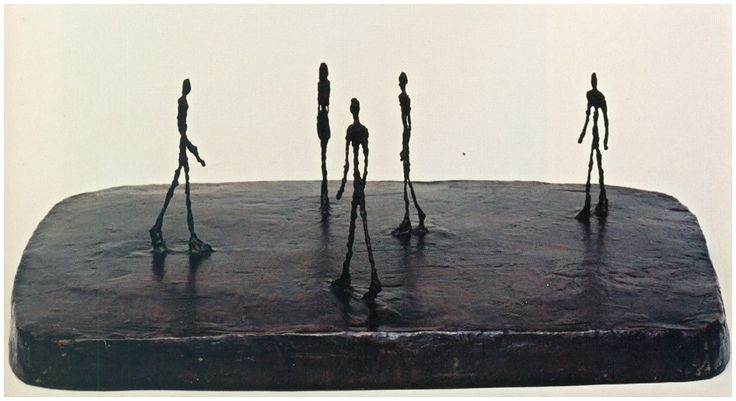

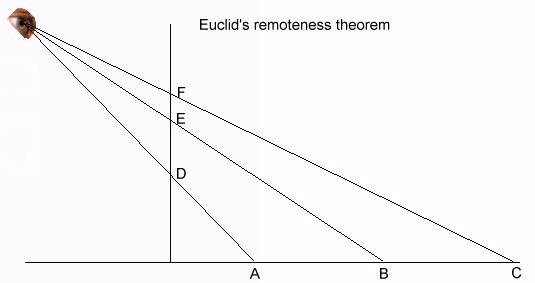






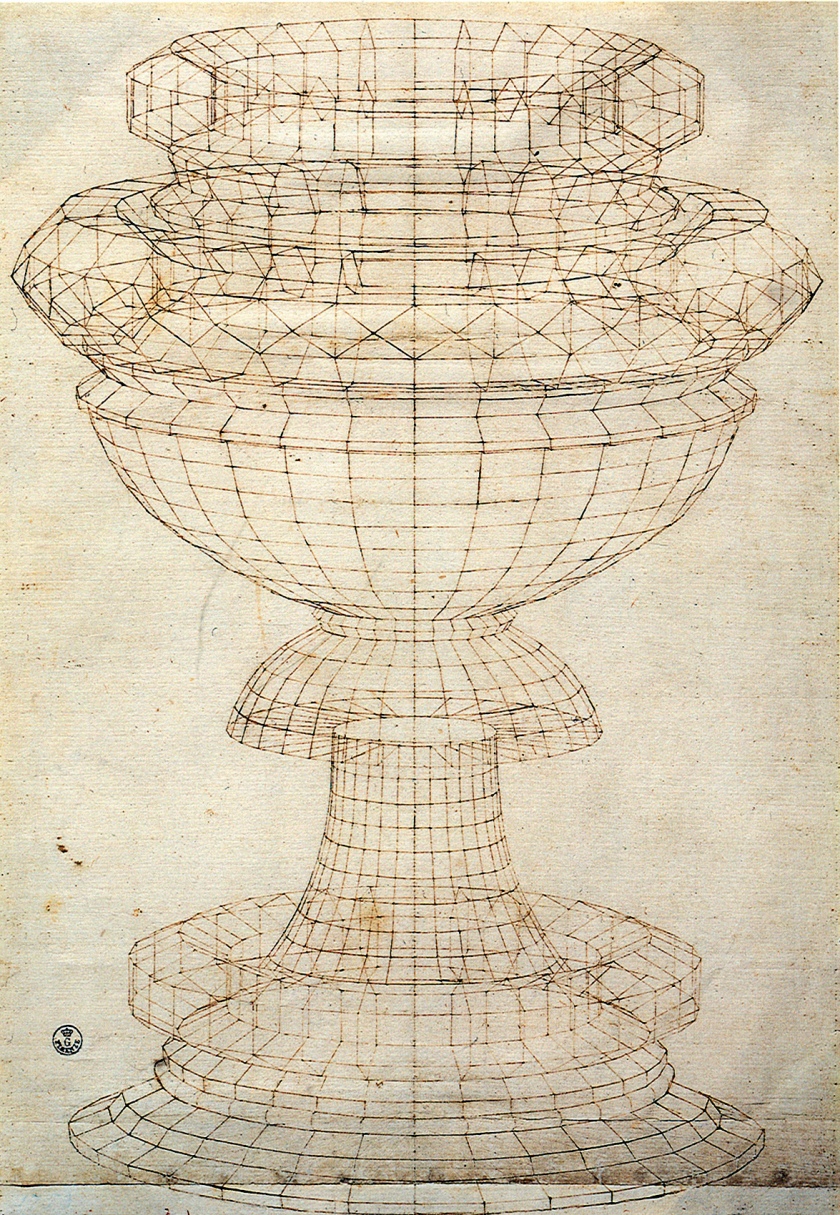







 Eva Hesse, Accession II, 1969
Eva Hesse, Accession II, 1969





































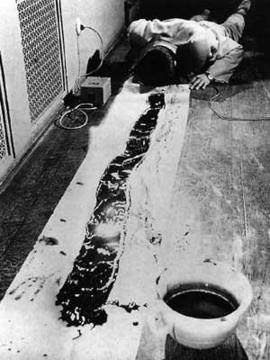

























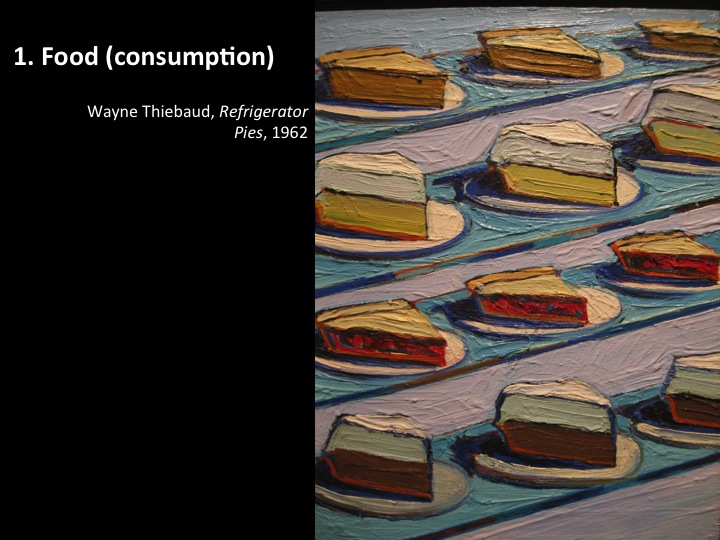




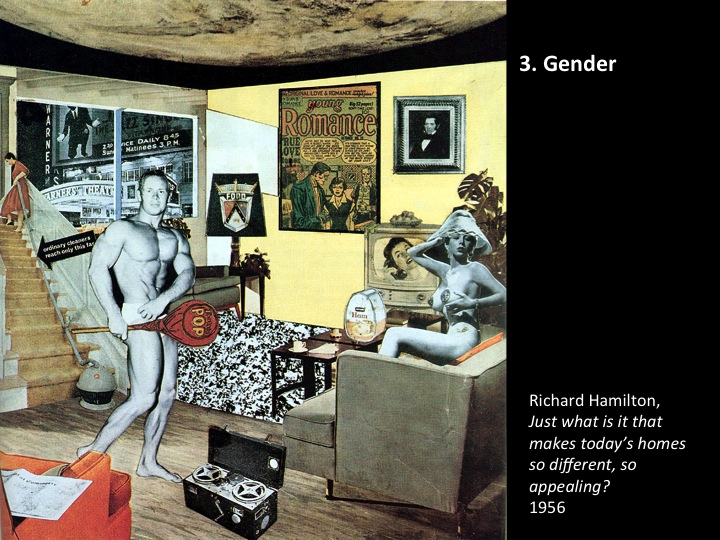



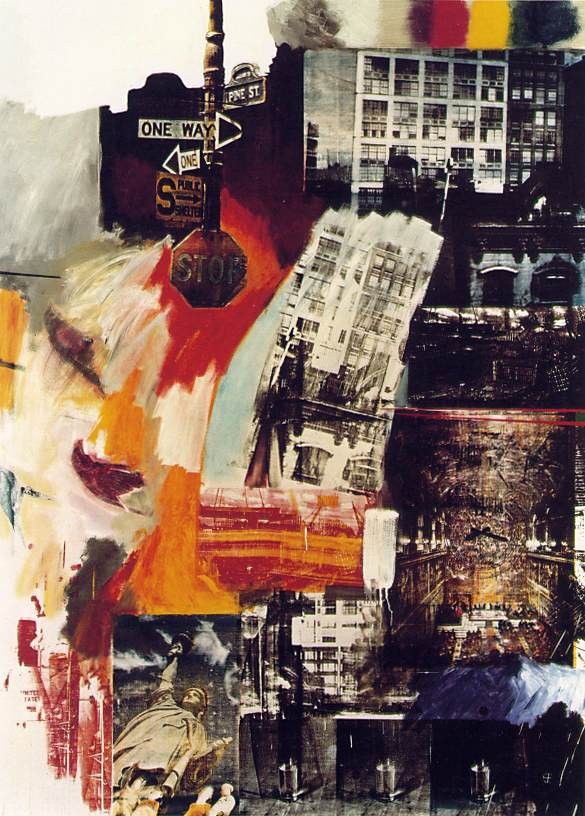













 (Marcel Duchamp, Belle Haleine, Eau de Voilette, 1921)
(Marcel Duchamp, Belle Haleine, Eau de Voilette, 1921)










